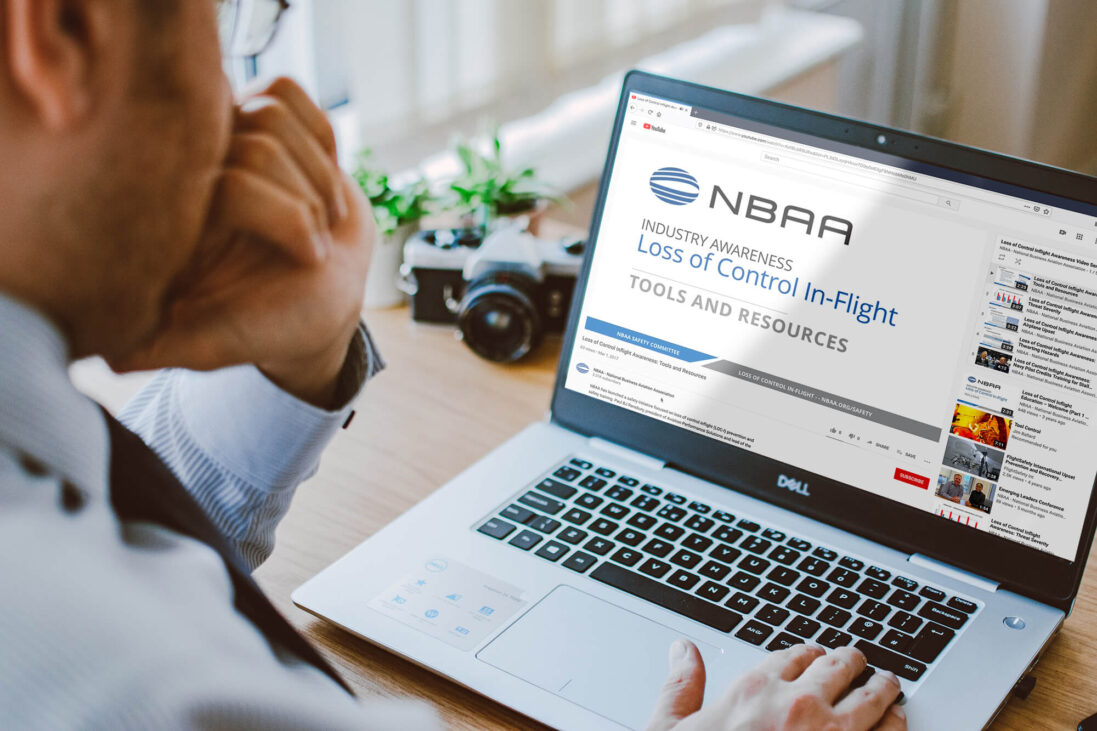
The following videos were created by the NBAA Safety Committee to bring awareness to the risk associated with loss of control inflight (LOC-I).
Loss of Control Inflight Awareness: Tools and Awareness
Runtime: 2:22
NBAA has launched a safety initiative focused on LOC-I prevention and safety training. Paul BJ Ransbury, president of Aviation Performance Solutions and lead of the NBAA Safety Committee LOC-I Working Group, provides an overview of the new tools and resources available to pilots.
Loss of Control Inflight Awareness: Threat Severity
Runtime: 3:07
LOC-I is the leading cause of fatalities in business and general aviation. As the rates of other categories of aviation accidents have trended lower over the past 10 years, the rates of LOC-I events have trended flat or slightly increased. Paul BJ Ransbury, president of Aviation Performance Solutions and lead of the NBAA Safety Committee LOC-I Working Group, provides a perspective on accident statistics surrounding LOC-I.
Loss of Control Inflight Awareness: Airplane Upset
Runtime: 3:22
An airplane upset is defined as an airplane in flight unintentionally exceeding the parameters normally experienced in line operations or training. The aircraft is not doing what it was commanded to do and is approaching unsafe parameters. Any time the aircraft is doing something uncommanded, it’s time for the pilot flying to take action.
Loss of Control Inflight Awareness: Thwarting Hazards
Runtime: 3:59
To thwart the hazards associated with the risk of LOC-I, a multi-faceted approach is needed which includes awareness, prevention & recovery. Awareness is knowing the hazards associated with airplane upsets and LOC-I. Prevention implements the barriers to mitigate or minimize the hazards. Recovery is knowing how to recover from an airplane upset.
Loss of Control Inflight Awareness: Navy Pilot Credits Training for Stall Recovery
Runtime: 4:11
There’s no substitute for upset prevention and recovery training (UPRT) — just ask former U.S. Navy pilot Mike Marlowe, who experienced a severe inverted spin while training in a King Air C-12. Marlowe credits the UPRT training he received in the military with giving him the tools to recover the aircraft safely. “Having that experience of being upside down in a real aircraft and knowing how to look at it, feel it and recover from it was paramount in our success,” said Marlowe.


 International Business Aviation Council Ltd.
International Business Aviation Council Ltd.